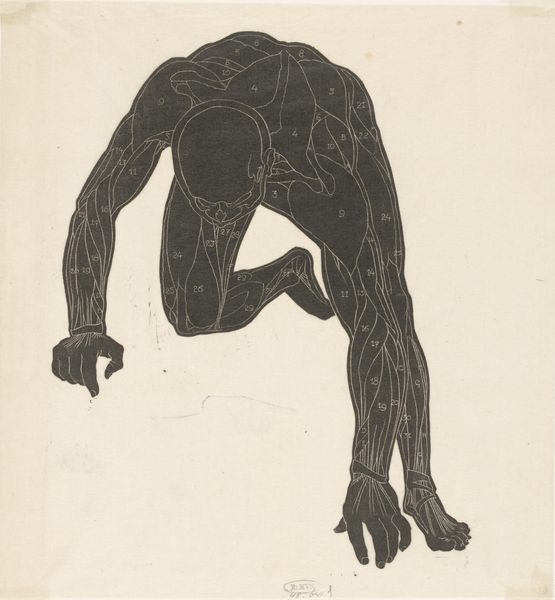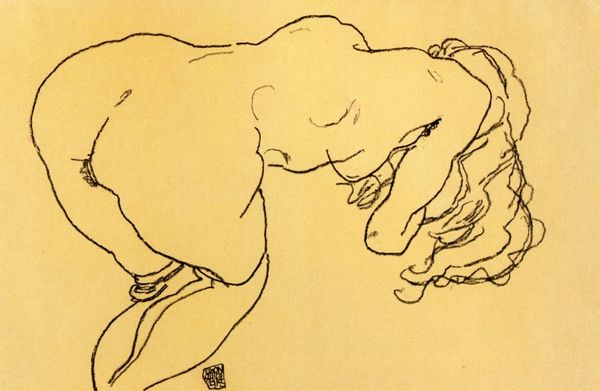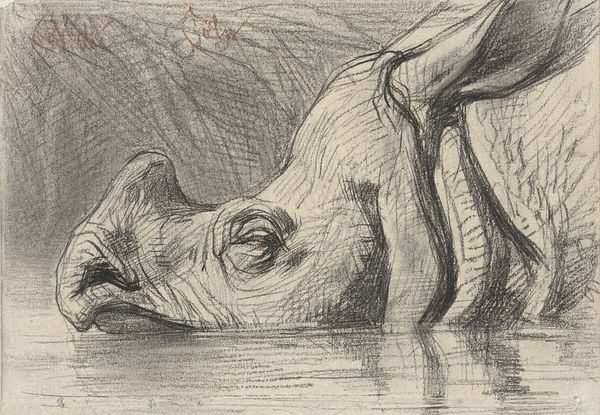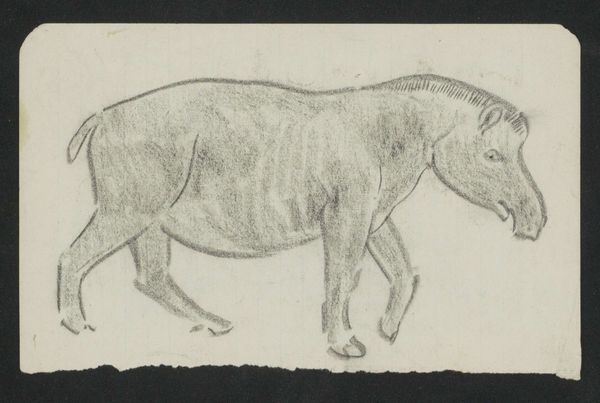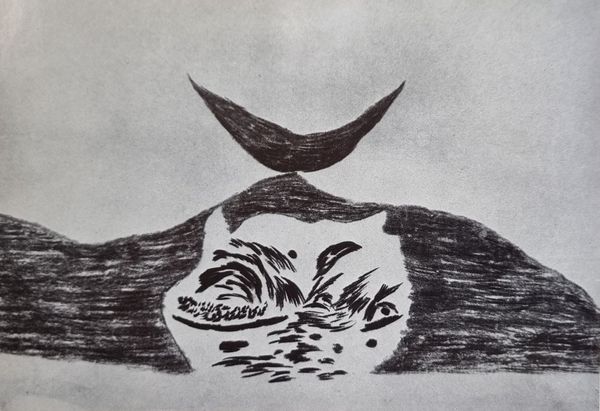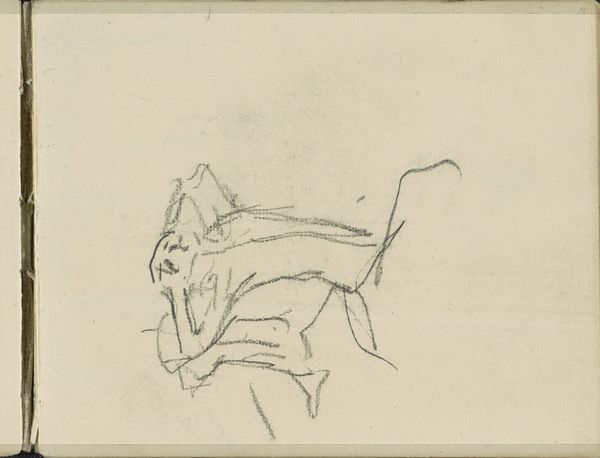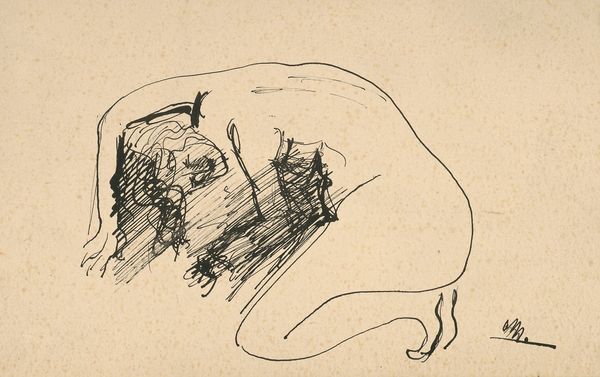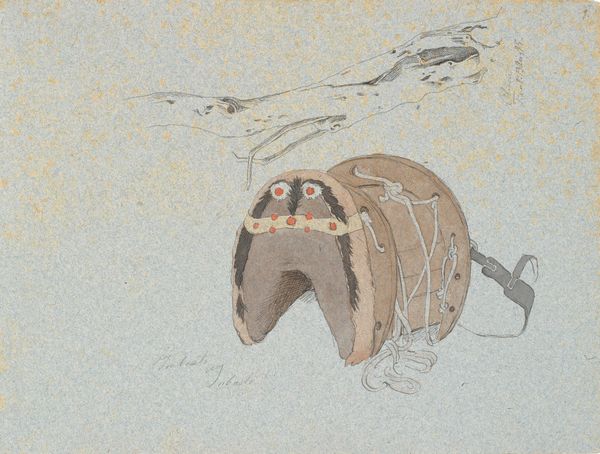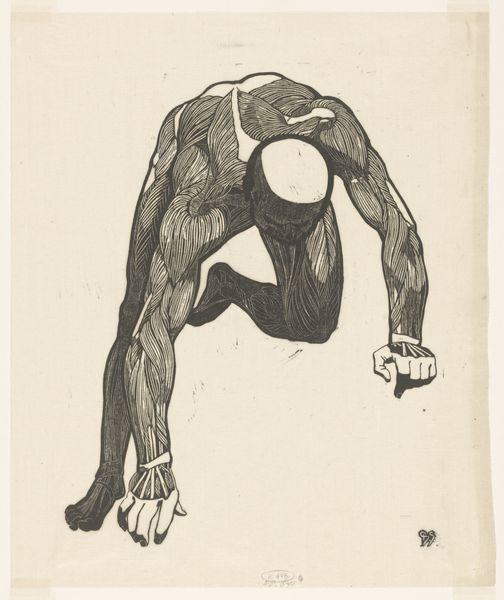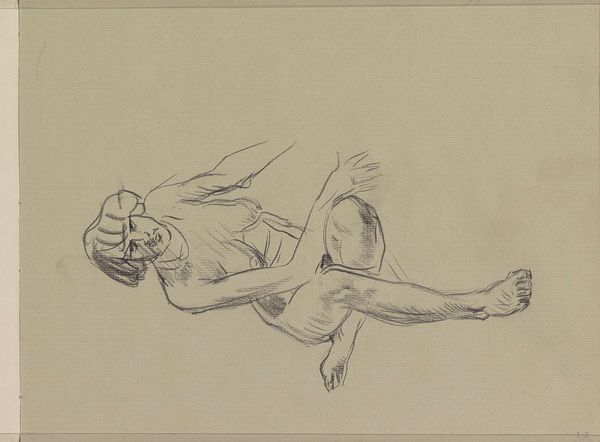
drawing, dry-media, pencil
#
drawing
#
figuration
#
dry-media
#
pencil
#
line
Dimensions: height 67 mm, width 157 mm
Copyright: Rijks Museum: Open Domain
Editor: This is Gerrit Willem Dijsselhof's "Sluipende katachtige," created sometime between 1876 and 1924, a drawing made with pencil. I'm struck by how menacing the cat appears; its expression is quite fierce. What do you make of its almost snarling gaze? Curator: That gaze is key. It isn't just a portrait of a cat, but the embodiment of primal instinct. Consider the cultural history of cats. From revered deities in ancient Egypt to symbols of the occult in later eras, they carry complex associations with both power and mystery. Dijsselhof seems to tap into that inherent duality. Do you see how the dark background amplifies this sense of lurking danger? Editor: Yes, the stark contrast makes it feel like it’s emerging from darkness, or perhaps preparing to disappear back into it. But isn't it a rather simple drawing in terms of technique? Curator: The simplicity is deceptive. Notice how the lines, though economical, perfectly capture the musculature and predatory posture. The very act of drawing, especially with a medium as direct as pencil, allows for an immediacy that speaks to raw emotion. Think about the power of line in ancient cave paintings, a direct connection to our ancestors and their world. What emotions do you connect to this animal figure? Editor: I think it's scary, and I also think it is powerful. The artist seems to be conveying an emotion more than creating an accurate representation of a cat. It’s fascinating how he evokes so much with so little. Curator: Precisely. It reminds us that images are rarely neutral; they are laden with cultural memory, triggering responses that resonate deep within our collective psyche. I've really enjoyed our discussion.
Comments
No comments
Be the first to comment and join the conversation on the ultimate creative platform.

